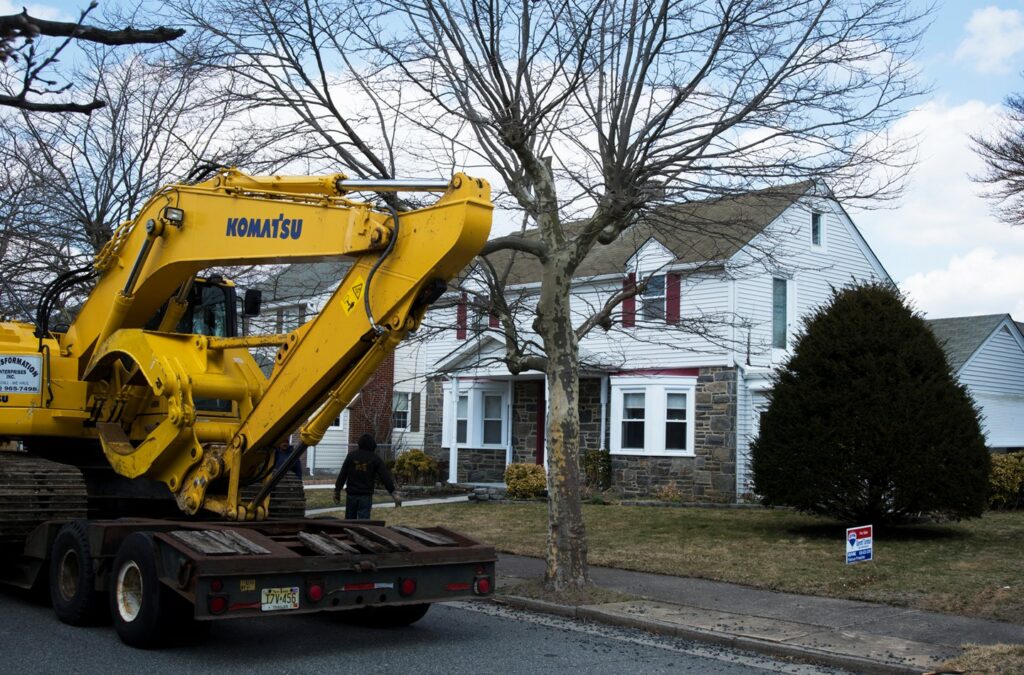Steve Jasiecki/Tree-lined streets provide walkable neighborhoods and foster a sense of calm.
Submitted by STEVE JASIECKI
MARGATE - We often view trees as decorative components that add to the aesthetics of a home, park or business. We understand the ecological importance supporting local bird and wildlife, but may not see the financial benefits of trees or their function as part of a city's infrastructure.
Cities around the world are turning towards trees as a form of bioengineering to create healthy communities and to mitigate some of the environmental problems associated with urban development.
City trees, or community forest, provide services to a city in a variety of ways. They provide better health by cleansing the air, removing particulates and producing oxygen. The millions of leaves act as tiny scrubbers filtering out the pollutants, improving air quality. Communities with good canopy coverage experience less asthma and fewer respiratory ailments. Trees add fragrance to the air, creating a fresh aroma throughout the year. Who doesn't enjoy the scent of spring when the trees bloom, perfuming the air or that fresh fragrance emitted just before and after a rainstorm?
Being around trees helps the body produce cortisol, thus reducing stress and lowering blood pressure. Studies show that traffic moves slower on tree-lined streets making them safer.
They help ward off flooding during rain events. Tree canopies will intercept the rainfall slowing down and holding back some of the water, giving storm drains a chance to drain the water, which mitigates flooding. Tree roots absorb ground water and dry out the soil, which creates more airspace making room for the next rain event.
Their shade keeps communities cooler. Shade trees can reduce the heat island effect from 3 to 7 degrees Fahrenheit. This saves energy and makes communities more comfortable. Trees help block out ultraviolet radiation. This is particularly important since skin cancer rates are on the rise.
Trees and other vegetative matter keep the environment cleaner by holding back some of the pollutants that would otherwise be entering the storm drains. Trash, pollutants and other sediments are slowed down giving street sweepers a chance to scoop them up before entering the storm drains and into the bay and ocean.
Buildings, streets and other hard surfaces amplify sound creating noisier cities, while trees quiet a neighborhood by masking noise and absorbing sound waves. Often when a large tree is removed, there is a noticeable difference in noise volume.
 Two 70-year-old street trees stand guard as demolition equipment gets ready to clear-cut the lot to build two new houses.
Two 70-year-old street trees stand guard as demolition equipment gets ready to clear-cut the lot to build two new houses.
Business districts do much better with tree lined streets. People enjoy shopping and spend more time in areas that are more esthetically pleasing. Restaurants and shops know this. Last summer when restaurants opened up outdoors, they placed trees around their business to attract customers because people enjoy them. It gives their business a calm, warm atmosphere, which is very inviting.
Home values are higher with tree-lined streets. They create nice walkable neighborhoods where people have relief from the hot sun and enjoy the sights, smells and sounds of a micro-forest.
It's important to note that it is the large tree canopy that provides the best services for the community, more than the number of trees. Protecting and caring for these trees are important and needs special consideration. On average it takes about 30 years before a tree will reach the potential of having a large enough tree canopy to provide the services mentioned.
Far too often developers see trees as a nuisance. They will indiscriminately cut them down not appreciating the value they have to the community. They demolish everything on a lot - the house, trees and all. To comply with building requirements, they will replace the trees with small saplings, but it's a far cry from what has been removed. It is not the same.
Protecting the old growth trees is paramount to maintaining the esthetics and services that only they can provide. A tree takes a long time to reach maturity and is not replaceable within a lifetime. Once cut down it cannot be put back.